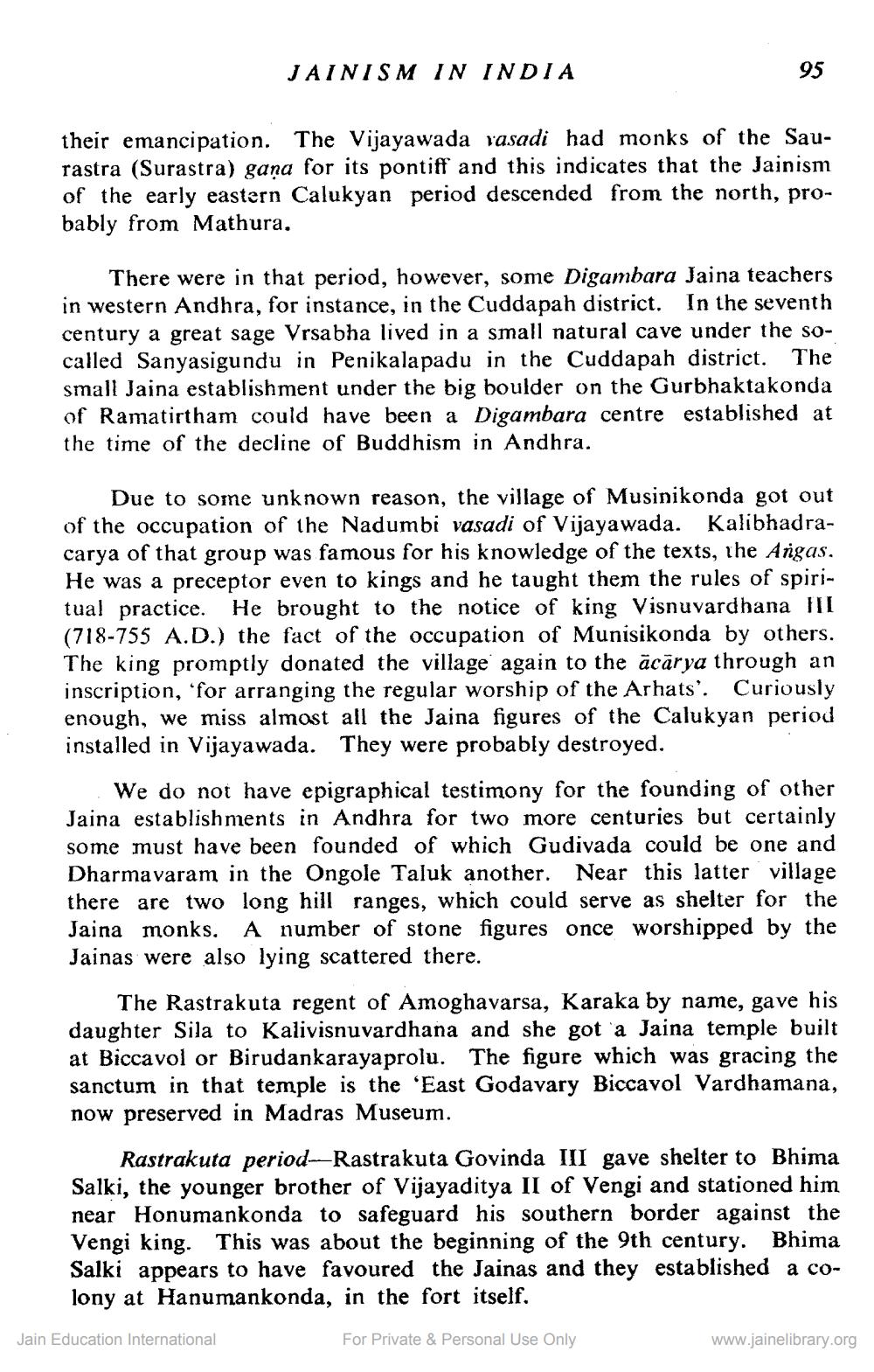________________
JAINISM IN INDIA
their emancipation. The Vijayawada rasadi had monks of the Saurastra (Surastra) gana for its pontiff and this indicates that the Jainism of the early eastern Calukyan period descended from the north, probably from Mathura.
There were in that period, however, some Digambara Jaina teachers in western Andhra, for instance, in the Cuddapah district. In the seventh century a great sage Vrsabha lived in a small natural cave under the socalled Sanyasigundu in Penikalapadu in the Cuddapah district. The small Jaina establishment under the big boulder on the Gurbhaktakonda of Ramatirtham could have been a Digambara centre established at the time of the decline of Buddhism in Andhra.
Due to some unknown reason, the village of Musinikonda got out of the occupation of the Nadumbi vasadi of Vijayawada. Kalibhadracarya of that group was famous for his knowledge of the texts, the Argas. He was a preceptor even to kings and he taught them the rules of spiritual practice. He brought to the notice of king Visnuvardhana III (718-755 A.D.) the fact of the occupation of Munisikonda by others. The king promptly donated the village again to the ācārya inscription, 'for arranging the regular worship of the Arhats'. Curiously enough, we miss almost all the Jaina figures of the Calukyan period installed in Vijayawada. They were probably destroyed.
We do not have epigraphical testimony for the founding of other Jaina establishments in Andhra for two more centuries but certainly some must have been founded of which Gudivada could be one and Dharmavaram in the Ongole Taluk another. Near this latter village there are two long hill ranges, which could serve as shelter for the Jaina monks. A number of stone figures once worshipped by the Jainas were also lying scattered there.
The Rastrakuta regent of Amoghavarsa, Karaka by name, gave his daughter Sila to Kalivisnuvardhana and she got a Jaina temple built at Biccavol or Birudankarayaprolu. The figure which was gracing the sanctum in that temple is the 'East Godavary Biccavol Vardhamana, now preserved in Madras Museum
Rastrakuta period—Rastrakuta Govinda III gave shelter to Bhima Salki, the younger brother of Vijayaditya II of Vengi and stationed him near Honumankonda to safeguard his southern border against the Vengi king. This was about the beginning of the 9th century. Bhima Salki appears to have favoured the Jainas and they established a colony at Hanumankonda, in the fort itself.
Jain Education International
For Private & Personal Use Only
www.jainelibrary.org




